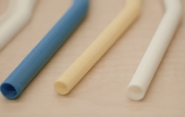Student-Built Device Clears the Way For Surgeons

Blood, fat, and anything else that gets in the way can make things tricky for surgeons. To clear the way, a vacuum tube is used to suck away the debris and give doctors a clear field of view. The problem is that the system for suctioning the debris can get clogged - a lot.
“When that happens, it can delay a case for more than 10 minutes,” said Daniel Wiznia, assistant professor of orthopedics and rehabilitation and mechanical engineering & materials science. And it’s a particular problem in his field, since bone and cartilage often find their way into the mix of debris. “Once you operate in orthopedic surgery and this challenge is happening in every case three to four times each surgery - and sometimes more - it’s always on your mind: Why isn’t there something better?”
That’s where the students of Engineering Innovation & Design (ENAS 118) come in. Taught by SEAS senior research scientist Larry Wilen and SEAS Deputy Dean Vince Wilczynski, the course taps the expertise of faculty and staff from numerous disciplines throughout Yale. Each of these experts tasks a student team with a problem to solve. Wiznia, who graduated from Yale in 2006 with a mechanical engineering degree, knows his way around the problem-solving process.
“I pitched this problem as something that these first-year students could work on and introduce them to a lot of engineering principles - fluid dynamics, computer prototyping, and the product design process.”
Wiznia met with the team of Charlie Markert ’21, Enrique Martinez Padres ’22, Thuy Pham ’22, and Gavrielle Welbel ’22, each week to dissect the problem of clogging suction systems. Some of the students joined Wiznia in the operating to observe firsthand the system clogging. The students spent much of their time figuring out not just why the system clogs, but specifically where in the system it’s happening.
“The students were really excellent in terms of defining what the problem was and defining where all these issues occur,” Wiznia said.
They pinpointed four locations: at the suction tip, at the junction of the tube and the tip, along the tubing and the connection between the tubing and the canister that stores the debris.
“They made a lot of iterative designs to address each of those issues and they gained a lot of skill in terms of the prototyping, troubleshooting, and working as a team to solve a problem. And they learned how to validate their designs by running experiments.”
To make it as user-friendly as possible, the students focused on making a system with few moving parts.
“Our ideas seemed simple and straightforward, but we spent the remaining weeks determining the best dimensions for allowing ease of use and also dimensions that fit the current system correctly,” said Charlie Markert. “This was surprisingly the most challenging part, and we found ourselves making iteration after iteration, trying to nail the dimensions down correctly.”
The final version featured a new tip-and-handle combination that increases the flow of bodily materials into the canister. They also invented a cap that attaches to the lid of the canister storing the bodily materials, which acts as a new way for the material to enter the canister. It uses a similar tubing system but eliminates the junction between the tube and the canister where much of the clogging occurs.
Testing it on a concoction of flour, water, corn syrup solution, and 3D-printed bones, they found that it works faster than conventional devices, with 95% less clogging.
“They took the system we currently use and ran head-to-head trials against their designs,” Wiznia said. “The design solved almost all of the issues we were having with clogging, and the incidence of clogging with their system was very, very low.”
Wiznia said the next step is to partner with a specialty orthopedics instruments company, which will build a prototype for use in trials performed in the operating room.

